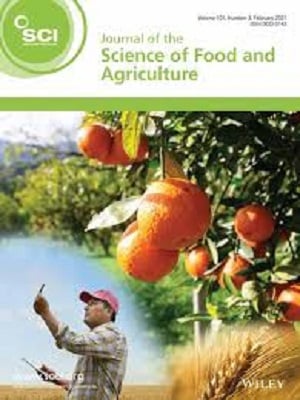Dietary supplementation of 11 different plant extracts on the antioxidant capacity of blood and selected tissues in lightweight lambs
Journal of the Science of Food and Agriculture 2019, 99:9, p: 4296-4303
- Ruminants

Abstract
Background
Due to the growing public concern regarding the addition of chemical antioxidants to foods, focus has shifted towards natural alternatives. Because of their antioxidant potential, culinary herbs and spices have long been used to extend the shelf‐life of foods. However, a better understanding of the fate of these products following intake is required to assess their use in lamb diets.
Results
Two hundred and eighty‐eight Rasa Aragonesa male lambs (70 days old) were supplemented (5.0 g kg−1 compound feed) with bay, marjoram, oregano, rosemary, thyme, turmeric, cumin, caraway, dill, cinnamon and nutmeg extracts for 14 days before slaughter. Dietary supplementation with plant extracts had no effect on intake, growth performance or antioxidant activity in blood (TEAC values). In muscle, nutmeg supplementation increased (P < 0.05) the radical‐scavenging capacity (TEAC), whereas a decrease in the radical‐scavenging capacity was found for lambs supplemented with oregano, dill, cinnamon and nutmeg (ORAC values). In liver, nutmeg supplementation increased (P < 0.05) the antioxidant capacity (TEAC), whereas bay (ORAC), turmeric, cinnamon and nutmeg (DPPH• values) decreased (P < 0.05) the radical‐scavenging capacity of the tissue. In kidney, a lower (P < 0.05) radical‐scavenging capacity (TEAC values) was found in lambs supplemented with oregano, cumin and caraway, whereas, turmeric, cumin, caraway, cinnamon and nutmeg increased (P < 0.05) the antioxidant capacity (ORAC values) in kidney.
Conclusion
Supplementation of lamb diets with plant extracts affected radical‐scavenging activity in muscle, liver and kidney. However, due to the divergent results of the different assays for the same tissue, it is not advisable to discriminate plant extracts using this approach. © 2019 Society of Chemical Industry